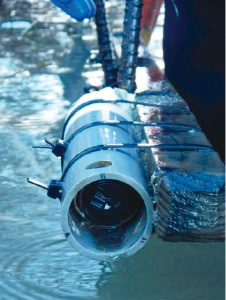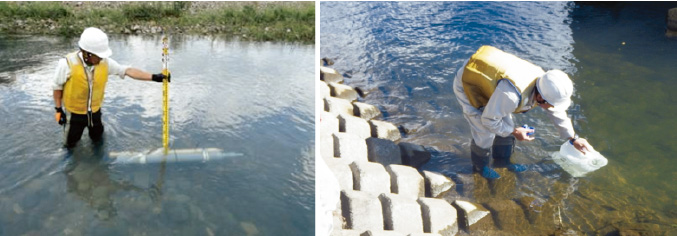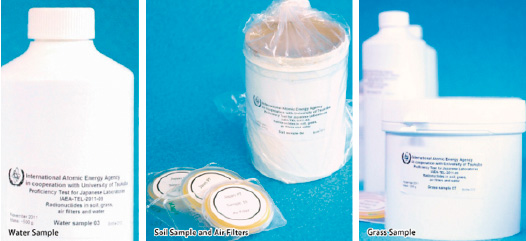Research outline
In collaboration with the Fukushima Institute of Environmental Radioactivity, this faculty performs comprehensive research on transition mechanisms and distribution conditions of radioactive substances in the environment to explain the effects of radioactive substances from nuclear accidents on the environment. In particular, we promote research for modeling predictions and monitoring studies in the transition of radioactive substances discharged by water, soil, and sediment in forests and other land-based environments.
Transfer of radionuclides in forest environments

Field observation of radioactivity using a forest observation tower
(portable-germanium semi-conductor gmma ray detector)
Approximately 70% of the region affected by radionuclides discharged due to the Fukushima Daiichi nuclear accident includes forests. It is imperative to understand the behavior of radionuclides in forest environments to explain the effects of radiation on the surrounding environment and absorption of radionuclides by vegetation from the soil. We are committed to actively obtaining measurement data that are useful in predicting future transition patterns and conditions, in addition to explaining the mechanisms behind the transfer of radionuclides in forest environments.
Discharging radionuclides via soil erosion from various land-uses

Measuring discharge of radioactive substances through paddies (Flow gauging weirs and turbidity measurement equipment)
Radionuclides deposited on the land surface transition into the wider environment together with soil particles. This department aims to develop techniques for predicting transfer of radionuclides in a wide range of environments wherein various spatial information and monitoring data of soil erosion are integrated using geographic information system (GIS). Using this method, parameters are estimated for the transfer of radionuclides accompanying soil erosion and sediment discharge on the basis of numerical modeling.
Long-term predictions for transfer of radionuclides through waterways
Radionuclides that accumulate on earth’s surface spread downstream through waterways together with water, soil, and sediment, and eventually flow into oceans. The dispersion of radionuclides through waterways is directly connected with land-use policies, which in turn are designed to provide assistance to residents of that watershed.
This department aims to develop models capable of performing such long-term predictions for Fukushima Prefecture and for the surrounding waterways by measuring the concentration of radionuclides in water bodies in both normal and flooded conditions.
Coordination with foreign and domestic research institutions
Our aim is to develop a timely solution for addressing the effects of the Fukushima Daiichi nuclear accident through coordinated efforts with foreign and domestic research institutions that have accumulated observational data regarding the transfer state of radiocesium originating from incidents such as the Chernobyl nuclear disaster.
In addition, by enlisting the help of the International Atomic Energy Agency (IAEA), we are able to contribute to the prevention of such accidents by providing technical assistance in formulating policies associated with each of the various ministries. Such measures can improve Japan’s radioactive substance monitoring capabilities to world-leading levels.

















